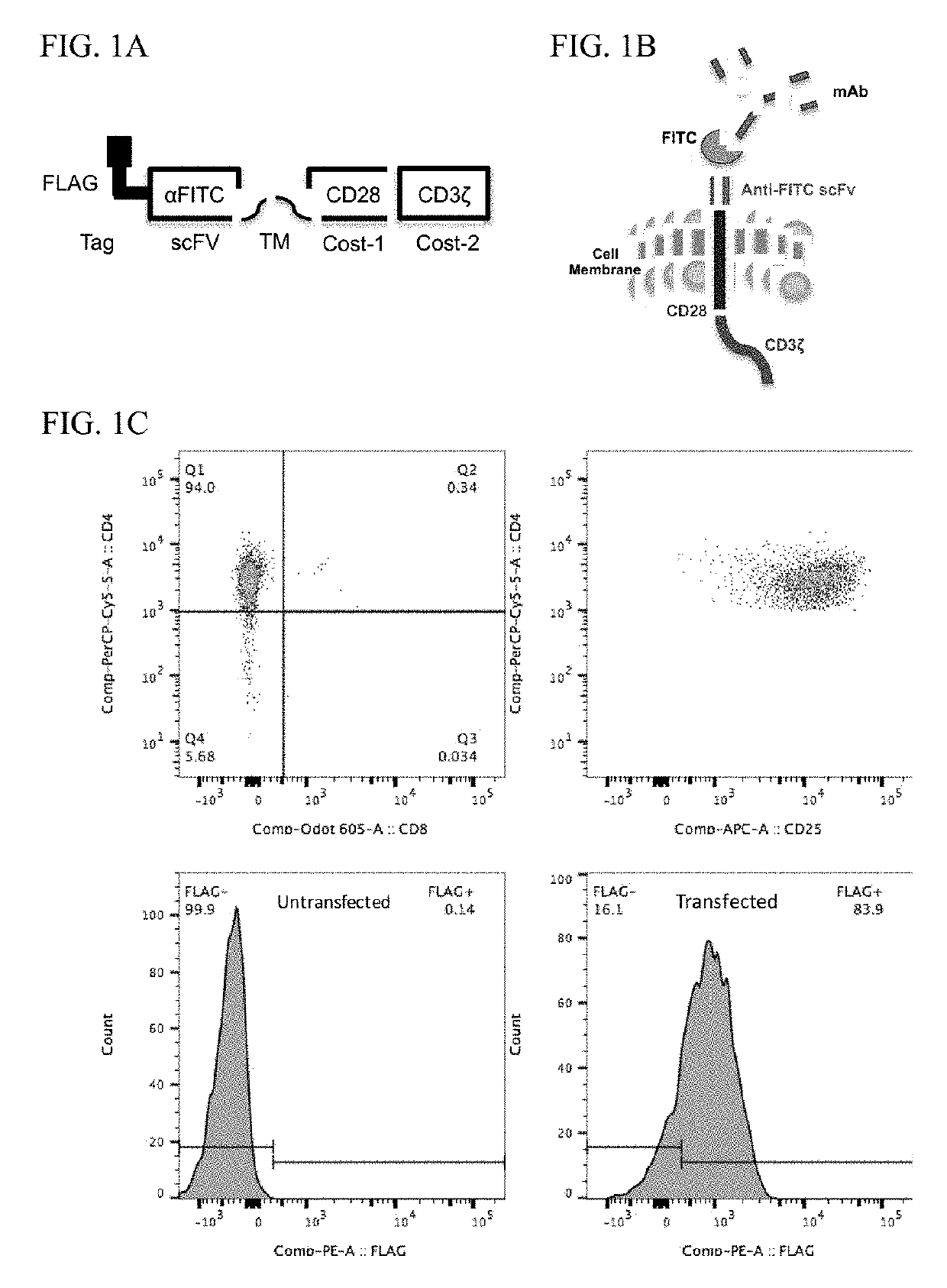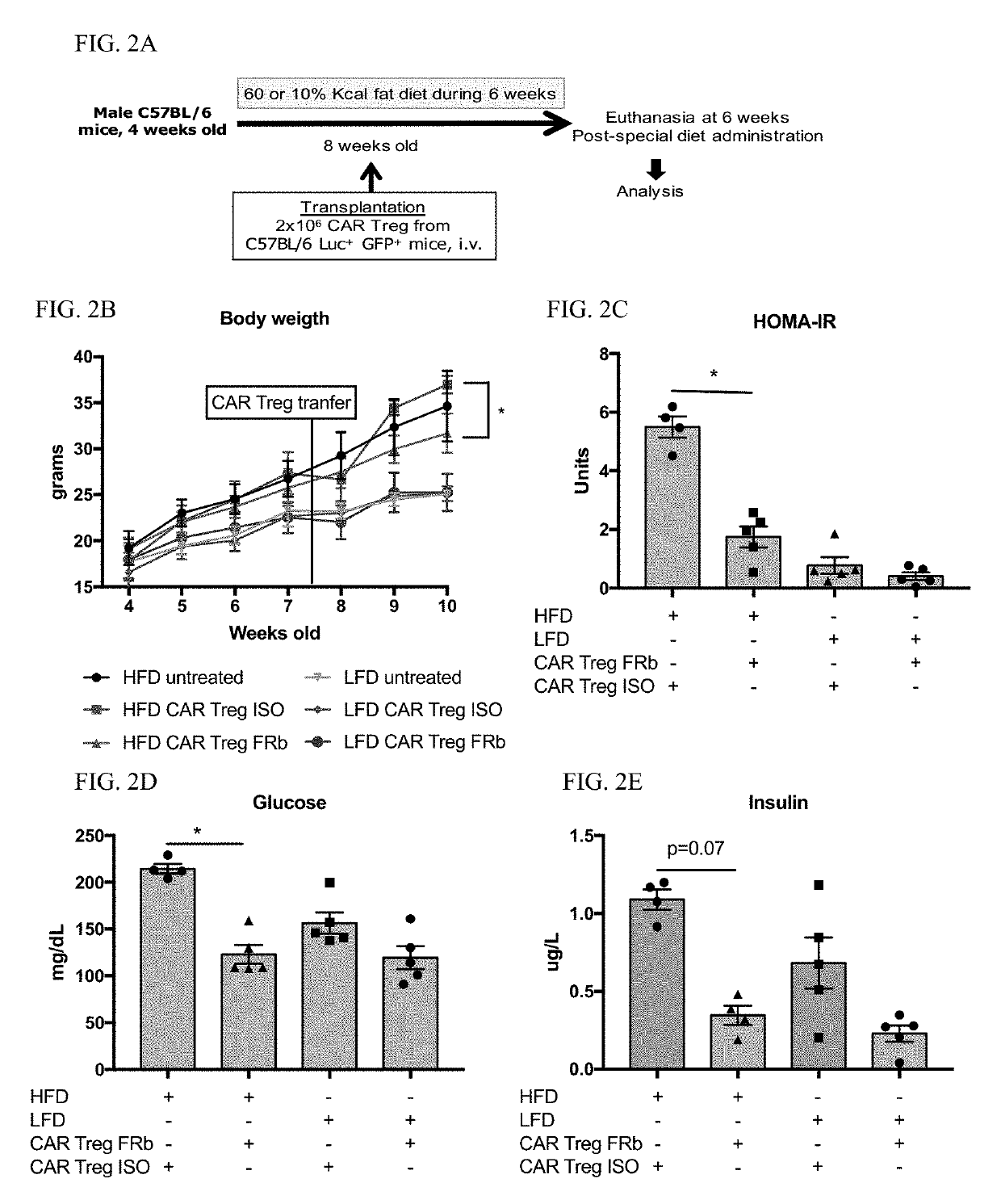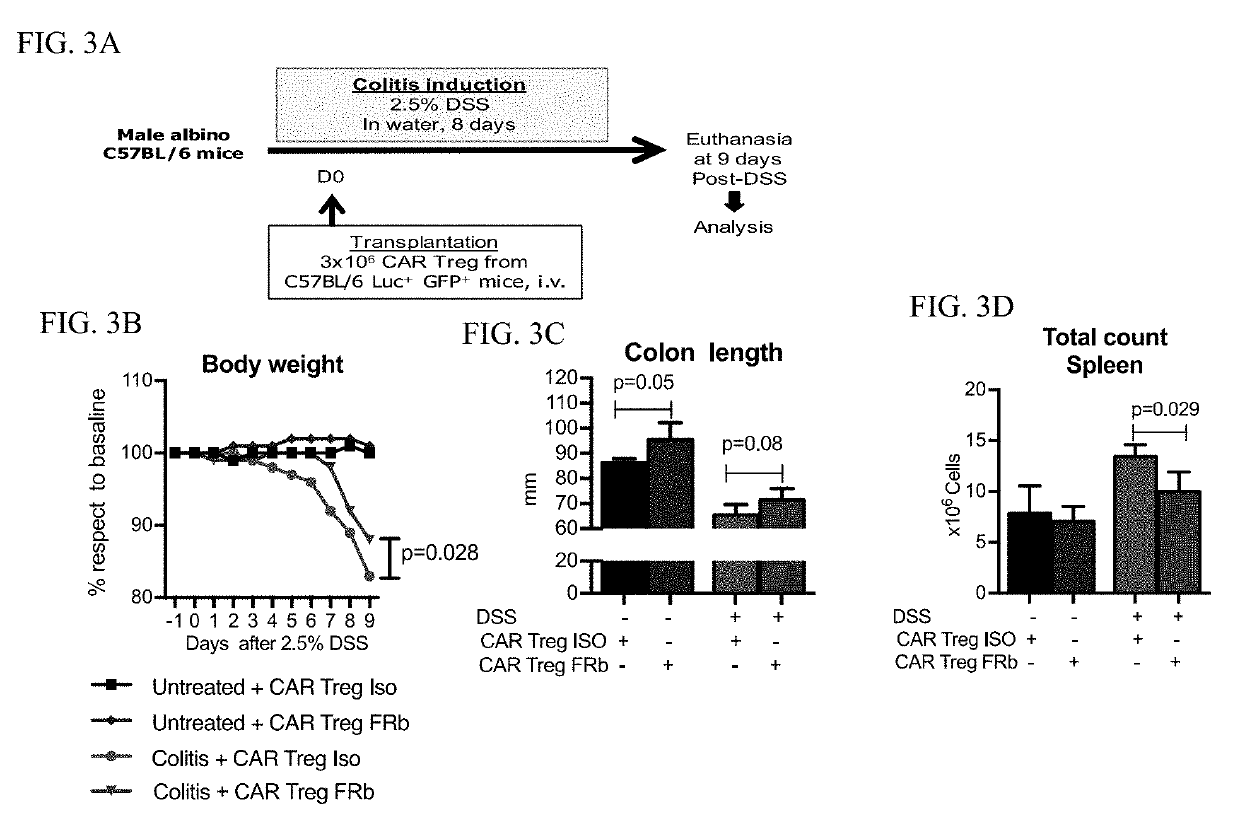Regulatory t cells targeted with chimeric antigen receptors
a technology of chimeric antigen receptors and t cells, which is applied in the field of chimeric antigen receptor targeted t cells, can solve problems such as the disadvantage of immunogenicity, and achieve the effect of enhancing hematopoietic cell transplantation (hct) and increasing the chimerism of the hos
- Summary
- Abstract
- Description
- Claims
- Application Information
AI Technical Summary
Benefits of technology
Problems solved by technology
Method used
Image
Examples
example 1
The Use of Chimeric Antigen Receptor T Regulatory Cells Reduces Insulin Resistance and Colitis in Mice
[0154]Chimeric antigen receptor T regulatory therapy reduce obesity and insulin resistance in mice. The treatment of chimeric antigen receptor (CAR) Treg targeted with monoclonal FITC anti-folate receptor b antibody, which is expressed in different tissues, for example epithelial cells and macrophages, was used to assess the impact of T cell therapy in type 2 diabetes. High- or low-fat diet (HFD or LFD) were provide to male C57BL / 6 mice 4 weeks old during 6 weeks. After 4 weeks of special diet, mice were treated or not with CAR Treg targeted with FITC anti-Folate receptor b or isotype control antibody (2×106 cells / mouse; i.v.). Mice received a dose of CAR Treg (FIG. 1 and FIG. 2A).
[0155]HFD mice increased their body weight significantly during the 6 weeks. Any difference was shown between HFD controls or HFD isotype control antibody treated mice. In contrast, body weight was signifi...
example 2
Targeted CAR-Treg Promote Increased Chimerism after Hematopoietic Stem Cell Transplantation
[0173]The role of chimeric antigen receptor (CAR) regulatory T cells (CAR-Treg) in promoting tolerance after hematopoietic stem cells transplantation leading to hematopoietic mixed chimerism was investigated. Hematopoietic cell chimerism may facilitate donor-specific tolerance to transplanted organs as well as eliminating the need for immunosuppressive therapy.
[0174]To address this question experimentally, 057 / B6 (B6) mice received 10 doses of total lymphoid irradiation (TLI) in addition to 5 doses of ATS, a well-established regime that conditions mice to receive allogeneic bone marrow (BM) cells from Balb / c mice. In addition to BM cells, mice also received CAR-Tregs that express a chimeric antigen receptor, which recognizes FITC, as described in Example 1. Before inoculation into mice, CAR-Tregs were coated with either FITC-MHC-I mAb or a FITC-isotype control mAb. As seen in FIG. 4, mice that...
PUM
| Property | Measurement | Unit |
|---|---|---|
| Fraction | aaaaa | aaaaa |
| Fraction | aaaaa | aaaaa |
| Composition | aaaaa | aaaaa |
Abstract
Description
Claims
Application Information
 Login to View More
Login to View More - R&D
- Intellectual Property
- Life Sciences
- Materials
- Tech Scout
- Unparalleled Data Quality
- Higher Quality Content
- 60% Fewer Hallucinations
Browse by: Latest US Patents, China's latest patents, Technical Efficacy Thesaurus, Application Domain, Technology Topic, Popular Technical Reports.
© 2025 PatSnap. All rights reserved.Legal|Privacy policy|Modern Slavery Act Transparency Statement|Sitemap|About US| Contact US: help@patsnap.com



